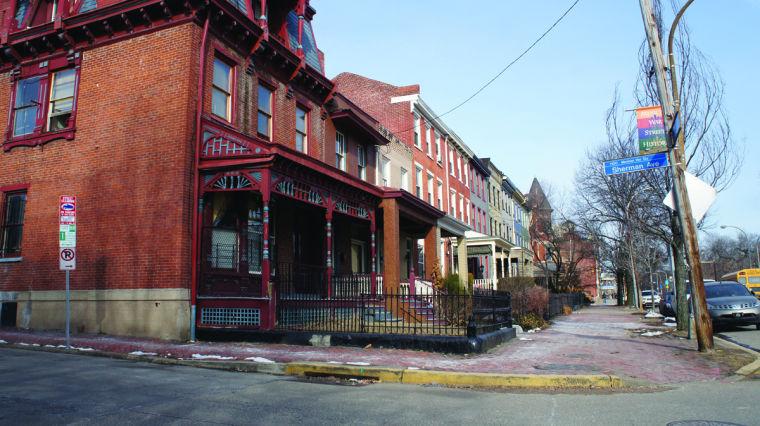North Side’s Mexican War Streets a trip through time
March 19, 2014
Nestled on the North Side, far away from the collegiate bubble that is Oakland, is the Mexican War Streets neighborhood — one of Pittsburgh’s most unique and historically significant areas.
Despite being listed on the National Register of Historic Places, the Mexican War Streets neighborhood is a mystery to many Pittsburgh residents. I even had to Google “cool places in Pittsburgh” to find it. Like the conflict from which they take their name, the Mexican War Streets are often forgotten amid the city’s more hip areas. Still, a cursory look will reveal that there is much to see and even more to experience.
Pittsburgh is full of mysteries, and some of these are even worth taking a hellish series of bus trips to unravel. Fortunately, the Mexican War Streets neighborhood does not require such an arduous journey — the area connects directly to Oakland via the Port Authority’s 54 bus, meaning the neighborhood can be reached with ease.
Named by Gen. William Robinson Jr. after his service in the Mexican-American War and established in 1848 after Pittsburgh’s annexation of Allegheny, Pa., the Mexican War Streets historic district shows its age with elegance. Where Shadyside is quirky, Bloomfield is trendy and East Liberty is forcibly embracing modernity, the Mexican War Streets neighborhood is content to exist in the past. Attractive Victorian row houses line the narrow roads, giving it the look of somewhere you probably can’t afford. Visually, the area looks like a less pretentious Georgetown in Washington, D.C., or a less charismatic (and less confederate) Charleston Battery in Charleston, S.C. It’s quiet here, peaceful and even a bit sleepy. Even so, it’s a wonderful place to spend a day walking around and taking in the sights.
The wealth of mid-19th-century Pittsburgh is on full display in the Mexican War Streets. During that era, brick Victorians were still a relative rarity in the United States. Most houses, even nice ones, were made from wood that was ordered and shipped as part of a kit. Thus, many 19th-century houses can look as if they rolled off an assembly line, subscribing to the same plan and style as the rest of the houses in their city.
The houses of the Mexican War Streets, however, are a testament to Pittsburgh as an industrial city, showing off both skilled labor and fine building materials. Brick and stone abound here, and every building retains vestiges of elegance.
The picturesque Inn on the Mexican War Streets is a perfect example of this. Located in the former Boggs Mansion on North Avenue, the charming bed and breakfast looks much as it would have in the 19th century. The stone building is replete with an arched front veranda, wrought-iron fence and a beautiful living room with polished wooden walls and vintage furniture.
While calm and quiet tend to define the Mexican War Streets, Pittsburgh neighborhoods are rarely so singular in their characteristics. The Mexican War Streets neighborhood, of course, is no exception. There is a lively side to the area and its location could not be better for someone looking to get out and explore.
For lovers of science and nature, the National Aviary and Buhl Planetarium are short walks from the neighborhood, as are PNC Park and Heinz Field for those more interested in athletics. The Beer Market, located on Federal Street, is also just a hop, skip and jump away from the Mexican War Streets. Specializing in brews from all corners of the world with a menu spanning more than 50 pages, The Beer Market is reason enough to check the area out. Plus, what enhances historical beauty more than beer?
Randyland, located on Arch Street, is the life work of Randy Gilson, who through the work of both his hands and those of volunteers, has transformed a house into a work of art. The bright yellow facade is visible for blocks. Its happy murals, depicting everything from trees to jazz musicians, practically force a smile to the face of even the most grouchy among us. All the while, the bright green, orange and purple accents entice all who see them to come closer. What was once a simple but elegant brick building is now a monument to both the peculiar and the beautiful, making Randyland a must-see for anyone venturing the area.
It’s easy to get stuck in Oakland, where everything necessary to sustain collegiate life is present. But as easily accessible and filled with attractions as the area is, the Mexican War Streets are worth setting aside the time to go see. You can have a beer, take in some art and architecture, see some birds and learn about an exciting time in Pittsburgh’s history. Sounds like a day well spent.



